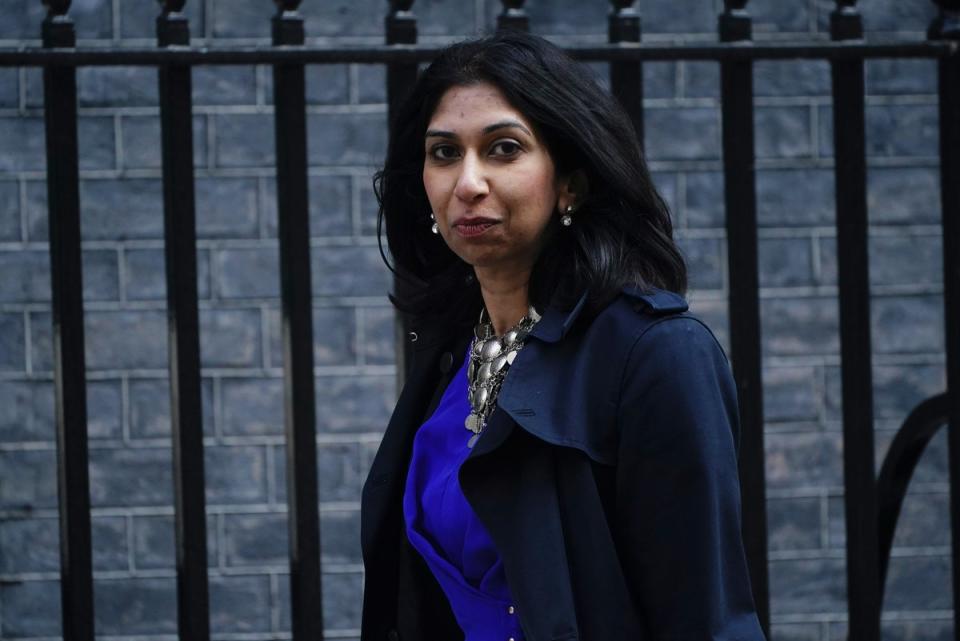What is the European Convention on Human Rights? Braverman says PM's new plan won't work

Former Home Secretary Suella Braverman has stated that the PM's current strategy for Rwanda will prevent additional asylum applicants from being transported there before the next election.
Due to Braverman's criticism of pro-Palestine marches and accusations that the police were being overly accommodating to pro-Palestinian demonstrators, and comments that being homeless is a "lifestyle choice", she was fired earlier this week.
After the Supreme Court declared the scheme unconstitutional, Rishi Sunak is planning emergency legislation to save it.
He revealed plans for new laws and a treaty with Rwanda just hours after their vote, allowing for the start of maiden flights in the spring.
Meanwhile, in a Telegraph article, the former Home Secretary argued that "tinkering with a failed plan" will not accomplish the Government's goals.
She suggested that in order to get it through, the Government should disregard human rights duties and laws in their "entirety".
However, Mrs Braverman stated that a new pact would not address "the fundamental issue", which is that Rwanda would repatriate asylum seekers to dangerous countries if they were returned by the UK's highest court.
The Supreme Court stated in its decision that there were "substantial grounds" to think that people deported to Rwanda may be returned to dangerous environments.
The unanimous judgment from the court's justices was announced by Lord Reed on Wednesday, saying those sent to Rwanda would be at "real risk" of being returned home, whether their grounds to claim asylum were justified or not – breaching international law.
Mr Sunak emphasised his commitment to the policy. He said it was "not the outcome we wanted" and told the Commons he was "prepared to change laws and revisit... international relationships" if they were "frustrating" his plans.
The new home secretary, James Cleverly, announced that the Government planned to change its agreement with Rwanda into a treaty, with extra clauses to stop asylum seekers from being returned home, in the hope of settling the court's concerns.
But why is it so difficult for the Government to deport illegal migrants?
This is due to the ECHR, the European Convention of Human Rights.So why does a European convention affect the UK after Brexit? We look into what the ECHR is and how it affects the UK.

What is the European Convention on Human Rights?
The ECHR is a treaty that established the European Court of Human Rights as a supranational court of appeal for cases to be heard when they have gone as far as they can in domestic courts.
It took effect in 1953 and the ECtHR was set up in 1959. It rules on individual or state applications alleging violations of the civil and political rights set out in the convention. Since 1998, it has sat as a full-time court and individuals can apply to it directly.
Over more than 60 years, the court has delivered more than 10,000 judgments, which are binding on the countries concerned, leading governments to alter their legislation and administrative practices in a wide range of areas.
The ECtHR’s case law makes the convention a powerful instrument for meeting new challenges and consolidating the rule of law and democracy in Europe.
The court is based in Strasbourg, in the Human Rights Building designed by British architect Richard Rogers in 1994 — a building whose image is known worldwide. From here, it monitors respect for the human rights of 700 million Europeans in the 46 Council of Europe member states that have ratified the convention.
What would leaving the ECHR mean?
The Conservative Party has had a long history of disagreement with the Strasbourg court and has, on numerous occasions, not ruled out leaving it. However, we are still members, despite Brexit.
In 2013, Theresa May said that all options remained on the table to deal with the court’s interpretation of human rights.
Mr Raab sought to circumvent the court using a new bill of rights, rather than simply exiting the body.
The Government said a British bill of rights will make plain that ECHR judgments, including such interim measures, are not binding on UK courts. Many lawyers argue this is a red herring. The website of the supreme court says UK courts must “take account” of the Strasbourg court but can decline to follow its rulings.
If the bill of rights is introduced, other benefits include making it easier to deport foreign criminals by restricting the circumstances in which their right to family life would trump public safety and the need to remove them.

 Yahoo Movies
Yahoo Movies 